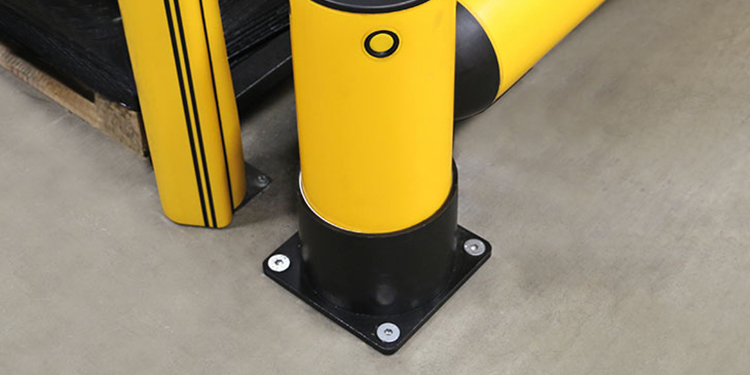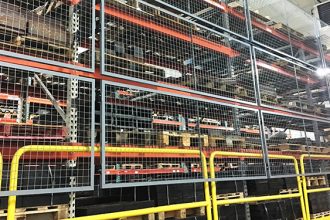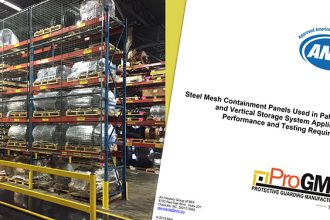The Importance Of Proper Anchoring For Safety Barriers And Protective Guarding

When properly installed, industrial guardrail barriers and barrier posts protect pedestrians, facility structures, and equipment against impacts from motorized vehicles, such as lift trucks. Nearly all of these structures are directly floor-mounted with robust anchors of varying types depending on the application.
Regardless of what type of protective guarding is used — such as bollards, industrial facility protection guardrails, and industrial pedestrian guardrails — if the system is not fastened to the floor or ground surface with proper anchors that have been correctly installed, it may not perform as designed in an impact. That’s because the system will not have the amount of resistance required to withstand the push force of the impact. In turn, the pullout forces exerted on the anchors will exceed their ability to remain embedded. Improper anchoring can therefore result in injured personnel and damaged products, equipment, or property.
Anchors themselves come in a broad range of types and styles. Depending on the parameters of the application, the guardrail or barrier manufacturer will supply the correct anchors to be used for installation. Anchors differ in diameter, material (mild steel for normal applications, stainless for washdown areas), depth of penetration into the floor, style (mechanical expansion anchor, Tapcon screw, or concrete fastener), exposed head or flush-mount, and more.
In addition to using the proper type of anchor, it is important to follow these installation best practices to ensure the maximum performance of the guardrail or barrier:
- Every hole in a baseplate gets an anchor. If a baseplate for a barrier or guardrail post has four holes, then each of the four holes should be filled with an anchor that secures it to the floor. This will minimize the risk of a pullout following an impact.
- Use the appropriate anchor for the surface. Barriers and guardrail posts affixed to new, un-damaged concrete require different anchors than surfaces made of asphalt, damaged concrete, or concrete that contains rebar.
- Asphalt is a softer material than concrete, so it typically needs longer anchors that extend deeper into the ground for greater impact resistance.
- Damaged concrete — if it is deemed still usable by the supplier of the protective guarding — requires a combination of epoxy and anchors to secure the system; the epoxy holds the material surrounding the anchor together, increasing its strength.
- Older concrete that contains rebar requires the rebar to be drilled through to secure the anchors. If that is not possible, then larger diameter (but shorter) anchors might be used instead, with or without epoxy.
- Replace the flooring. If the surface (usually concrete) is too damaged to hold the anchors — even with epoxy — that area of the floor should be replaced with new concrete prior to installation of the barrier or guardrail system.
- Mezzanine flooring may require different anchors. Not every mezzanine floor will be thick enough to provide the depth of anchoring required for an application. If a mezzanine floor is made of concrete, the manufacturer of the protective guarding system should take its depth into account when determining the most appropriate style, type, number, and mounting approach for the anchors to ensure that they do not protrude through the ceiling below.
- Routinely inspect protective guarding anchors. To ensure the continued performance and safety of the guardrail or barrier system, the anchors should be inspected at the frequency recommended by the manufacturer or supplier. Generally, inspections should occur at least once or twice a year and use a calibration tool to ensure that the anchors maintain the appropriate amount of torque required. Due to ongoing vibrations within the building, there is a chance that the anchors could loosen. If this occurs, they should be tightened to the degree specified by the manufacturer.
- Always inspect anchors after an impact. If the barrier or guardrail has been struck, inspect the anchors to verify they are still intact and secure. If there is a concern, have that portion of the system evaluated by the system manufacturer to ensure its viability and repaired or replaced if necessary.
Looking for more information about protective guardrails and other barriers to safeguard your personnel and facility? Consult with the members of the Protective Guarding Manufacturers Association (ProGMA) for guidance and recommendations for your application.



